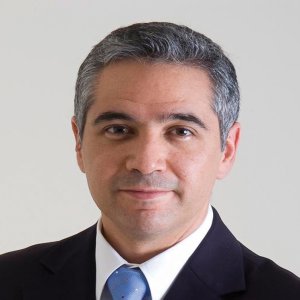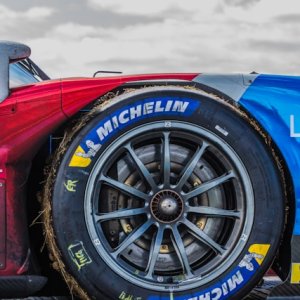Safety and Trust Key to Claiming Slice of Premium Pie
STORY INLINE POST
Volvo’s journey in Mexico began in 1999 but was affected by two major hurdles, the sale of Volvo to Ford and the 2008 financial crisis. Luis Gerardo Sánchez, the Director General of Volvo de México, explains this journey. “After it was purchased by Ford, Volvo’s goal in Mexico was to grow the premium sector. We began selling around 1,500 vehicles a year, which grew to 3,600 in 2005,” he explains. This figure could have kept on growing but the worldwide recession in Mexico and the US, as well as Ford’s intentions to sell Volvo, caused a perfect storm that stopped this growth in its tracks. By 2009, Volvo’s sales had plummeted to 900 a year. After China’s Geely purchased Volvo in 2010, it chose to start reinforcing operations in Mexico. “Our dealer network was developed, and new products were brought to the market to ensure that growth returned,” said Sánchez, adding that these two strategies are ensuring a promising future.
One favorable aspect that Volvo is counting on in a country as enamored with used cars as Mexico is the resale value of its vehicles. Volvo’s worldwide growth strategy aims to reach sales of 800,000 by 2020. While the Asian market is a key component of the Volvo sales machine, developing markets like Mexico are not being dismissed. Today, Volvo’s sales in the country stand at about 1,700 units per year, representing 0.4% of its global annual sales of 427,840 for 2013. Knowing that sales got as high as 3,600 in the past, Volvo has set a target of 10,000 annual sales in Mexico for which it has prepared a specific pipeline of vehicles.
2013 saw the launch of the V40 Cross Country, which Sánchez says was well-received. 2015 will see the launch of the new XC90 SUV, a car with which Volvo saw some success in the past. “The XC90 was a huge success when it was originally launched in Mexico. It contributed to the increase in 2005,” explains Sánchez. Predicting which vehicles will succeed in which market is a natural part of any pipeline, but Volvo is not simply trying to recreate past glories. According to Sánchez, the success of the XC90 back in 2005 showed the demand for larger, quality cars with high safety levels. He says that back then, no other premium brands matched the product offering of the XC90. “The updated XC90 will have an entirely new look and will include a number of innovative features. We are aiming to bring a new look to Volvo. Volvo has historically had a colder look from the outside with a very warm driving experience inside. The new model will change this, so that the external experience will surprise people.”
The improvement of Volvo’s sales in the Mexican market does not just depend on its own actions, as Sánchez well knows. For the Swedish carmaker’s target segments to grow, it needs car sales in the Mexican market to break out of their rut. Sánchez believes this will finally start to happen due to encouraging signs coming from the government and financial sector. In preparation for such an expansion, Volvo is working on expanding two important areas, its dealer base and its brand image. “We currently have 20 dealers and three sales points, which we want to continuously expand,” says Sánchez. “But along with this, we are trying to build on the public awareness of Volvo as a premium brand. People should consider Volvo as an attractive, safe vehicle that is fun to drive.”
Although the look and feel of Volvo’s cars is evolving, Sánchez is keen to point out that the company’s Swedish background and association to safety will remain to be seen as real competitive advantages. “There is a very subtle difference between the perception of luxury and premium, and Volvo fits into the premium category. Our Swedish heritage and synonymous quality association is one of our major values,” he explains. Volvo is not interested in trying to outperform other OEMs in terms of razzle-dazzle as “it is not a showy brand.” Instead, according to Sánchez, its cars aim to “provide quiet luxury for self-confident people. People do not buy our cars to show off.” He acknowledges this may have been a hindrance in the past, allowing buyers to see Volvo as a step toward the premium market rather than a full part of it. “We are working on changing this perception to reflect the reality that Volvo is a genuine premium brand.”
Ultimately, Volvo will be able to bank on its safety record, which has always been at the forefront of its communication. In 1994, when the company first started importing vehicles to Mexico, customers preferred paying less for units without airbags but this has been changing. Sánchez recounts how customers have returned to Volvo after having bad accidents, seeking to buy a new Volvo car out of appreciation for its safety. Each accident involving a Volvo vehicle around the world is relayed back to Sweden, where a team of engineers scrutinizes what could have been done to prevent each single accident. Seeking to stay at the forefront of security technology, Volvo’s new V40 Cross Country hatchback comes equipped with the first pedestrian airbag, front-mounted to protect anyone being hit. These safety features are being rolled out in Mexico at a time when Sánchez sees continuously growing awareness about the need for safety measures. This will make Mexico an interesting part of one of Volvo’s most intriguing commitments: to have zero fatalities in collisions involving a Volvo by 2020.




















